We’re delighted to offer a selection of latest releases from our core subjects of Anthropology, Archaeology, Colonialism, Economical History, Genocide Studies, Jewish Studies, History, Medical Anthropology, and Refugee and Migration Studies, along with our New in Paperback titles.
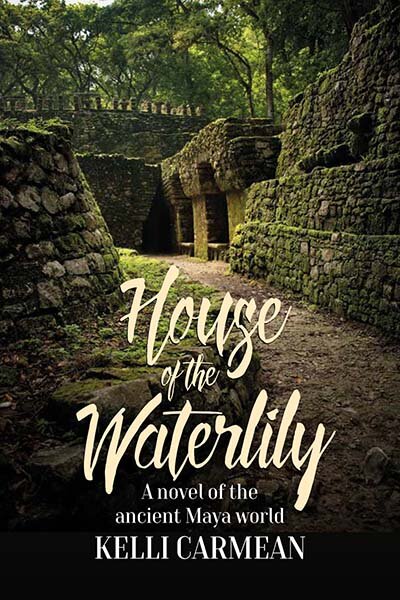 Paperback Original
Paperback Original
HOUSE OF THE WATERLILY
A Novel of the Ancient Maya World
Kelli Carmean
“House of the Waterlily is an excellent introduction into the world of the Classic Period Maya in large part because Carmean is a fine storyteller who weaves her narrative as beautifully as a ‘fine-spun’ huipil. This book would be an excellent addition to the course reading list for undergraduate students who are studying the ancient Maya.” · Scott Simmons, University of North Carolina, Wilmington
Set in the Maya civilization’s Late Classic Period House of the Waterlily is a historical novel centered on Lady Winik, a young Maya royal. Through tribulations that mirror the political calamities of the Late Classic world, Winik’s personal story immerses the reader not only in her daily life, but also in the difficult decisions Maya men and women must have faced as they tried to navigate a rapidly changing world. Kelli Carmean’s novel brings to life a people and an era remote from our own, yet recognizably human all the same.
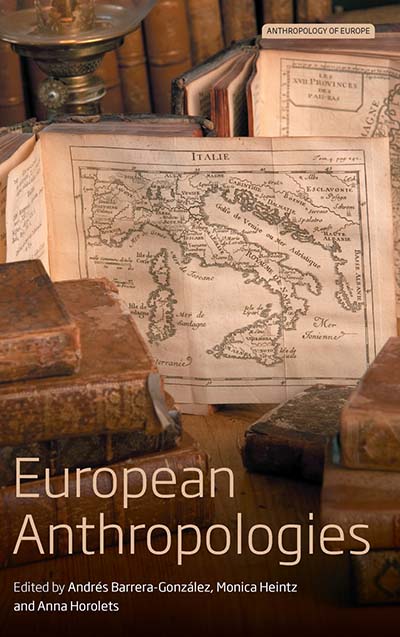 EUROPEAN ANTHROPOLOGIES
EUROPEAN ANTHROPOLOGIES
Edited by Andrés Barrera-González, Monica Heintz and Anna Horole
NEW SERIES: Volume 2, Anthropology of Europe
n what ways did Europeans interact with the diversity of people they encountered on other continents in the context of colonial expansion, and with the peasant or ethnic ‘Other’ at home? How did anthropologists and ethnologists make sense of the mosaic of people and societies during the nineteenth and twentieth centuries, when their disciplines were progressively being established in academia? By assessing the diversity of European intellectual histories within sociocultural anthropology, this volume aims to sketch its intellectual and institutional portrait. It will be a useful reading for the students of anthropology, ethnology, history and philosophy of science, research and science policy makers.
Read Introduction: Strength from the Margins: Restaging European Anthropologies
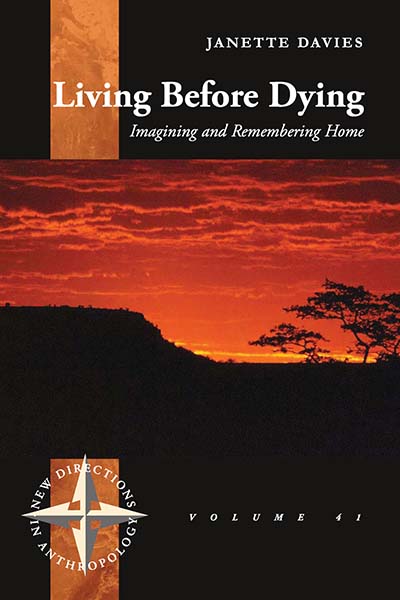 LIVING BEFORE DYING
LIVING BEFORE DYING
Imagining and Remembering Home
Janette Davies
Foreword by Lord Nigel Crisp
Volume 41, New Directions in Anthropology
This in-depth description of life in a nursing/care home for 70 residents and 40 staff highlights the daily care of frail or ill residents between 80 and 100 years of age, including people suffering with dementia. How residents interact with care assistants is emphasised, as are the different behaviours of men and women observed during a year of daily conversations between the author, patients and staff, who share their stories of the pressures of the work. Living Before Dying shows a world where, in extreme old age, people have to learn how to cope with living communally.
Read Introduction
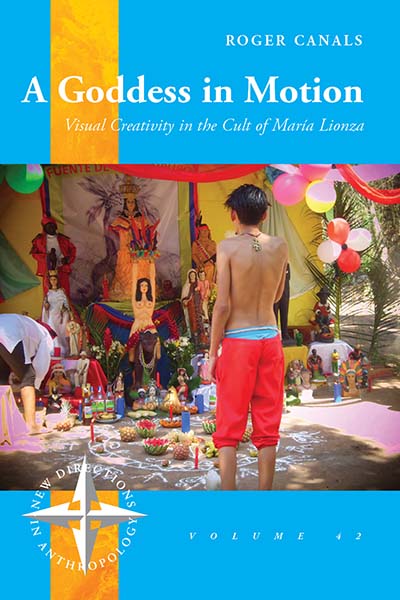 A GODDESS IN MOTION
A GODDESS IN MOTION
Visual Creativity in the Cult of María Lionza
Roger Canals
Volume 42, New Directions in Anthropology
The current practice of the cult of María Lionza is one of the most important and yet unexplored religious practices in Venezuela. Based on long-term fieldwork, this book explores the role of images and visual culture within the cult. By adopting a relational approach, A Goddess in Motion shows how the innumerable images of this goddess—represented as an Indian, white or mestizo woman—move constantly from objects to bodies, from bodies to dreams, and from the religion domain to the art world. In short, this book is a fascinating study that sheds light on the role of visual creativity in contemporary religious manifestations.
Read Introduction
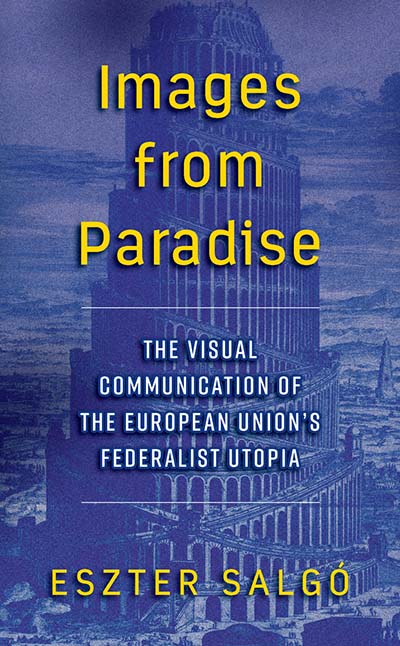 IMAGES FROM PARADISE
IMAGES FROM PARADISE
The Visual Communication of the European Union’s Federalist Utopia
Eszter Salgó
Drawing upon the disciplines of politics, anthropology, psychoanalysis, aesthetics and cinema studies, Salgó presents a new way of looking at the “art of European unification.” The official visual narratives of the European Union constitute the main object of inquiry – the iconography of the new series of euro banknotes and the videos through which the supranational elite seek to generate “collective effervescence,” allow for a European carnival to take place, and prompt citizens to pledge allegiance to the sacred dogma of the “ever closer union,” thereby strengthening the mythical sources of the organization’s legitimacy. The author seeks to illustrate how and why the federalist utopia turned into a political soteriology after the outbreak of the 2008 crisis.
Read Introduction: The (Long-Desired) Rebirth of Europe’s “Fantastic Family”
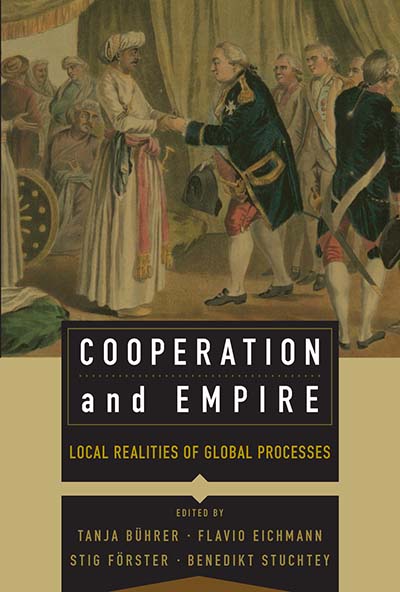 COOPERATION AND EMPIRE
COOPERATION AND EMPIRE
Local Realities of Global Processes
Edited by Tanja Bührer, Flavio Eichmann, Stig Förster and Benedikt Stuchtey
While the study of “indigenous intermediaries” is today the focus of some of the most interesting research in the historiography of colonialism, its roots extend back to at least the 1970s. The contributions to this volume revisit Ronald E. Robinson’s theory of collaboration in a range of historical contexts by melding it with theoretical perspectives derived from postcolonial studies and transnational history. In case studies ranging globally over the course of four centuries, these essays offer nuanced explorations of the varied, complex interactions between imperial and local actors, with particular attention to those shifting and ambivalent roles that transcend simple binaries of colonizer and colonized.
Read Introduction: Cooperation and Empire. Local Realities of Global Processes
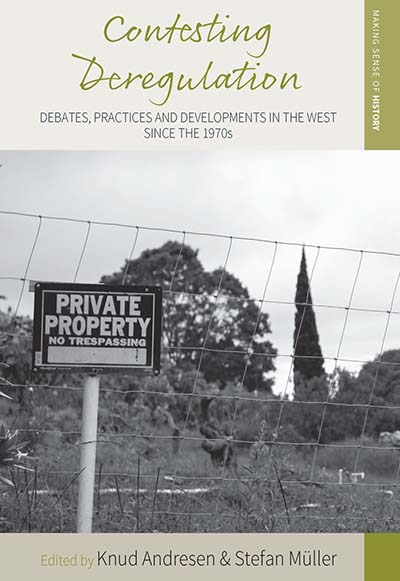 CONTESTING DEREGULATION
CONTESTING DEREGULATION
Debates, Practices and Developments in the West since the 1970s
Edited by Knud Andresen and Stefan Müller
Volume 31, Making Sense of History
Few would dispute that many Western industrial democracies undertook extensive deregulation in the 1970s and 1980s. Yet this narrative, in its most familiar form, depends upon several historiographical assumptions that bely the complexities and pitfalls of studying the recent past. Across thirteen case studies, the contributors to this volume investigate this “deregulatory moment” from a variety of historical perspectives, including transnational, comparative, pan-European, and national approaches. Collectively, they challenge an interpretive framework that treats individual decades in isolation and ignores broader trends that extend to the end of the Second World War.
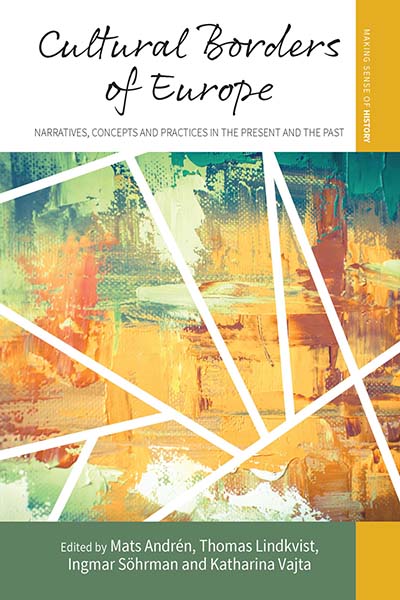 CULTURAL BORDERS OF EUROPE
CULTURAL BORDERS OF EUROPE
Narratives, Concepts and Practices in the Present and the Past
Edited by Mats Andrén, Thomas Lindkvist, Ingmar Söhrman and Katharina Vajta
Volume 30, Making Sense of History
The cultural borders of Europe are today more visible than ever, and with them comes a sense of uncertainty with respect to liberal democratic traditions: whether treated as abstractions or concrete realities, cultural divisions challenge concepts of legitimacy and political representation as well as the legal bases for citizenship. Thus, an understanding of such borders and their consequences is of utmost importance for promoting the evolution of democracy. Cultural Borders of Europe provides a wide-ranging exploration of these lines of demarcation in a variety of regions and historical eras, providing essential insights into the state of European intercultural relations today.
Read Introduction
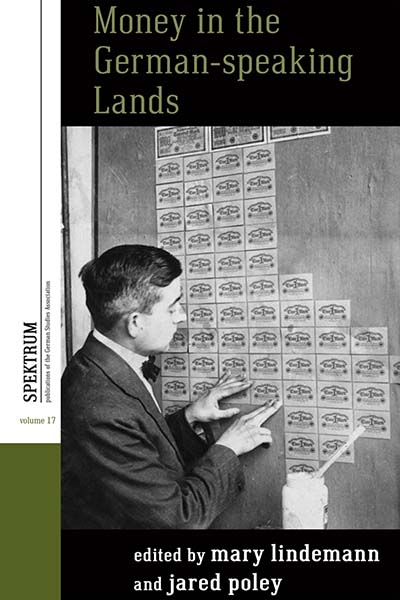 MONEY IN THE GERMAN-SPEAKING LANDS
MONEY IN THE GERMAN-SPEAKING LANDS
Edited by Mary Lindemann and Jared Poley
Afterword by Michael J. Sauter
Volume 17, Spektrum: Publications of the German Studies Association
Money is more than just a medium of financial exchange: across time and place, it has performed all sorts of cultural, political, and social functions. This volume traces money in German-speaking Europe from the late Renaissance until the close of the twentieth century, exploring how people have used it and endowed it with multiple meanings. The fascinating studies gathered here collectively demonstrate money’s vast symbolic and practical significance, from its place in debates about religion and the natural world to its central role in statecraft and the formation of national identity.
Read Introduction
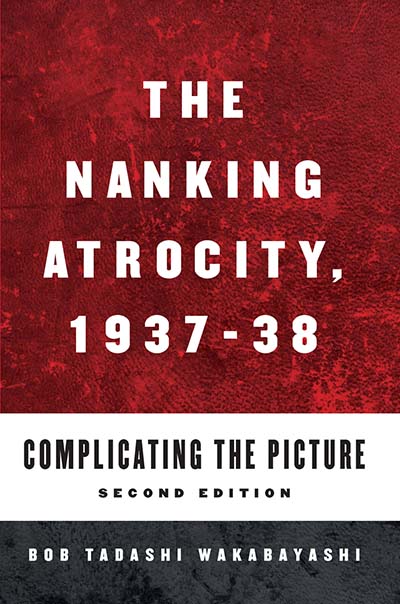 Second Edition
Second Edition
THE NANKING ATROCITY, 1937-1938
Complicating the Picture
Edited by Bob Tadashi Wakabayashi
Praise for the First Edition
“A refreshingly candid response to Japanese scholarship that denies or minimizes the attack on Nanking in order to advance contemporary jingoistic politics … Highly recommended.” · Choice
“All of the articles in the volume are essential reading for anyone interested in the subject.” · The Historian
First published in 2007, The Nanking Atrocity remains an essential resource for understanding the massacre committed by Japanese soldiers in Nanking, China during the winter of 1937-38. Through a series of deeply considered and empirically rigorous essays, it provides a far more complex and nuanced perspective than that found in works like Iris Chang’s bestselling The Rape of Nanking. It systematically reveals the flaws and exaggerations in Chang’s book while deflating the self-exculpatory narratives that persist in Japan even today. This second edition includes an extensive new introduction by the editor reflecting on the historiographical developments of the last decade, in advance of the 80th anniversary of the massacre.
Read Introduction: Iris Chang Reassessed: A Polemical Introduction to the Second Edition
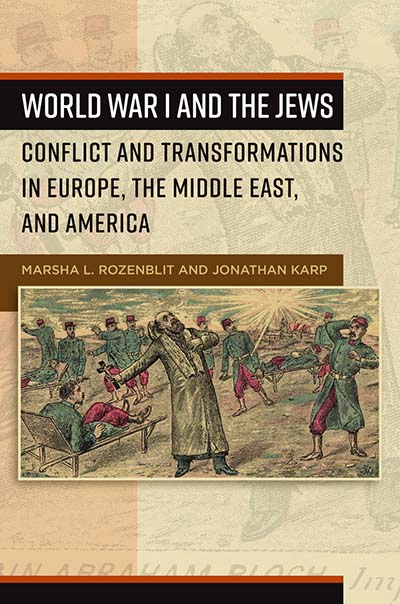 WORLD WAR I AND THE JEWS
WORLD WAR I AND THE JEWS
Conflict and Transformation in Europe, the Middle East, and America
Edited by Marsha L. Rozenblit and Jonathan Karp
World War I utterly transformed the lives of Jews around the world: it allowed them to display their patriotism, to dispel antisemitic myths about Jewish cowardice, and to fight for Jewish rights. Yet Jews also suffered as refugees and deportees, at times catastrophically. And in the aftermath of the war, the replacement of the Habsburg Monarchy and the Russian and Ottoman Empires with a system of nation-states confronted Jews with a new set of challenges. This book provides a fascinating survey of the ways in which Jewish communities participated in and were changed by the Great War, focusing on the dramatic circumstances they faced in Europe, North America, and the Middle East during and after the conflict.
Read Introduction: On the Significance of World War I and the Jews
 FERTILITY, CONJUNCTURE, DIFFERENCE
FERTILITY, CONJUNCTURE, DIFFERENCE
Anthropological Approaches to the Heterogeneity of Modern Fertility Declines
Edited by Philip Kreager and Astrid Bochow
Volume 36, Fertility, Reproduction and Sexuality: Social and Cultural Perspectives
In the last forty years anthropologists have made major contributions to understanding the heterogeneity of reproductive trends and processes underlying them. Fertility transition, rather than the story of the triumphant spread of Western birth control rationality, reveals a diversity of reproductive means and ends continuing before, during, and after transition. This collection brings together anthropological case studies, placing them in a comparative framework of compositional demography and conjunctural action. The volume addresses major issues of inequality and distribution which shape population and social structures, and in which fertility trends and the formation and size of families are not decided solely or primarily by reproduction.
Read Introduction
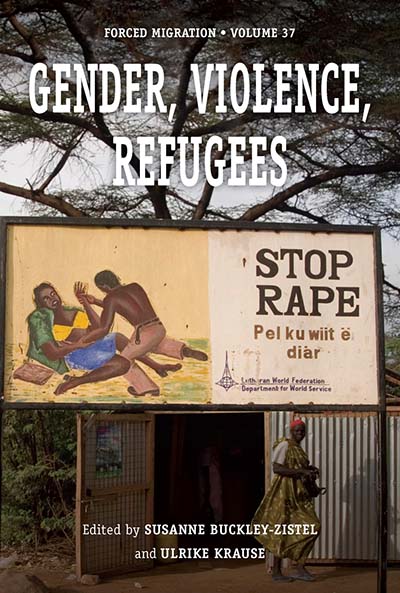 GENDER, VIOLENCE, REFUGEES
GENDER, VIOLENCE, REFUGEES
Edited by Susanne Buckley-Zistel and Ulrike Krause
Volume 37, Forced Migration
Providing nuanced accounts of how the social identities of men and women, the context of displacement and the experience or manifestation of violence interact, this collection offers conceptual analyses and in-depth case studies to illustrate how gender relations are affected by displacement, encampment and return. The essays show how these factors lead to various forms of direct, indirect and structural violence. This ranges from discussions of norms reflected in policy documents and practise, the relationship between relief structures and living conditions in camps, to forced military recruitment and forced return, and covers countries in Africa, Asia and Europe.
Read Gender, Violence, Refugees. An Introduction
NEW IN PAPERBACK
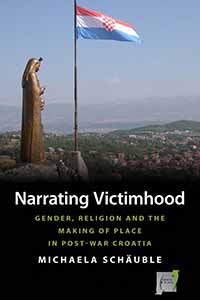 NARRATING VICTIMHOOD
NARRATING VICTIMHOOD
Gender, Religion and the Making of Place in Post-War Croatia
Michaela Schäuble
Volume 11, Space and Place
“I highly recommend the book for courses and projects dealing with political transformation processes in southeastern Europe, but also more broadly with the anthropology of ethno-nationalism and identity as well as collective memory studies in contexts of war, violence, and trauma.” · Journal of the Royal Anthropological Institute
“The book opens with a vivid description of how Michaela Schäuble, the author, and Marko, one of her interlocutors, gazed at the scenery of the central Dalmatian hinterland, in Croatia, through a telescope. Subtly inviting the readers to join, the prose in this book makes it clear that Schäuble is both an anthropologist and a filmmaker. Reading her rich ethnographic descriptions of Dalmatia, a rural, impoverished, marginal region in Croatia, characterised by ‘a stony, infertile soil and heavily fragmented landholdings’, often feels like following a camera’s movement through a scene.” · Anthropological Notebooks
Read Introduction
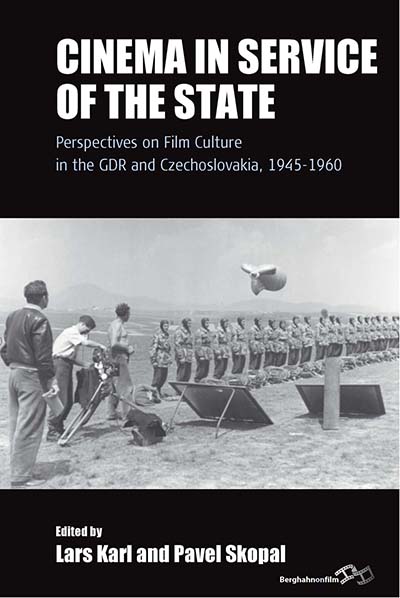 CINEMA IN SERVICE OF THE STATE
CINEMA IN SERVICE OF THE STATE
Perspectives on Film Culture in the GDR and Czechoslovakia, 1945-1960
Edited by Lars Karl and Pavel Skopal
Volume 18, Film Europa
“Lars Karl and Pavel Skopal have produced an intriguing edited volume that addresses a significant lacuna in transnational cinema scholarship.” · Historical Journal of Film, Radio and Television
“Offers valuable insights into institutions that no longer exist, yet still resemble our own present institutions with their anxious tics and politicized economic imperatives… The volume provides an appropriate reference work for anyone working on Eastern bloc media from the period.” · Studies in Eastern European Cinema
Read Introduction
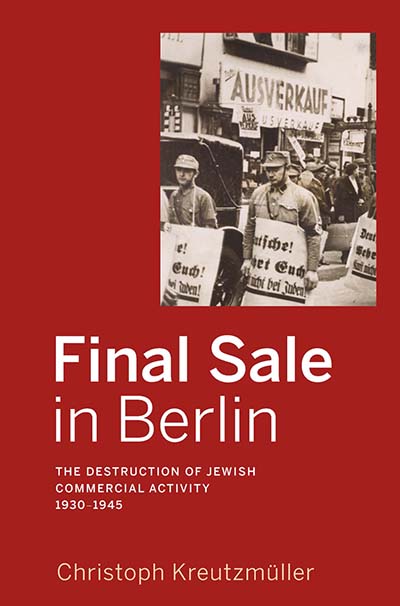 FINAL SALE IN BERLIN
FINAL SALE IN BERLIN
The Destruction of Jewish Commercial Activity, 1930-1945
Christoph Kreutzmüller
Translated from the German by Jane Paulick and Jefferson Chase
“Kreutzmüller’s well written study deals with resistance offered by Berlin’s Jews in the face of Hitler’s legal machinery to destroy their economic selfreliance. The exhaustive research… abundant examples and case studies complement the data, making the book useful for both research and teaching.” ·Choice
“Christoph Kreutzmüller’s book is vigorously researched, elegantly structured and well-written, and succeeds in providing new information on a subject already exhaustively studied, namely ‘Aryanization’ and the destruction of business, that extends beyond the borders of Berlin.” · H-Net
Read Introduction
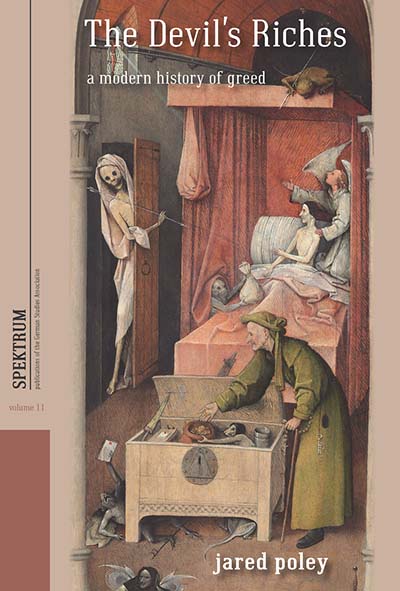 THE DEVIL’S RICHES
THE DEVIL’S RICHES
A Modern History of Greed
Jared Poley
Volume 11, Spektrum: Publications of the German Studies Association
“…a thought-provoking study of a subject that is too often taken for granted, rather than subjected to critical examination.” · Financial Times
“Scholarly yet accessible, this is an excellent, much-needed analysis of a subject that is both topical and timeless. Poley focuses on key figures and social forces in well-chosen case studies from throughout modern history, providing a valuable perspective on the last half millennium of globalized capital.” · Douglas McGetchin, Florida Atlantic University
Read Introduction
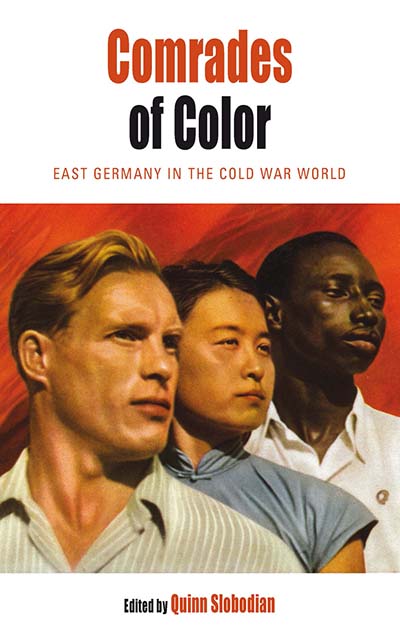 COMRADES OF COLOR
COMRADES OF COLOR
East Germany in the Cold War World
Edited by Quinn Slobodian
Volume 15, Protest, Culture & Society
“The chapters in the edited volume provide nuanced cases of East German idealism and the limitations of its practice, which belied a variety of racial prejudices and tensions… the interdisciplinary and extended geographic scope of this edited volume successfully furthers a number of interrelated fields relating to the role of the GDR and the socialist world in the Cold War, race and their continuing legacies.” · Journal of Contemporary History
“This is an important volume, providing a number of helpful interventions to a growing field. It ought to be commended for its unorthodox inclusion of primary sources, as well as its broad interdisciplinary approach, which reflects the multi-faceted nature of the topic it approaches.” · Slavonic and East European Review
Read Introduction
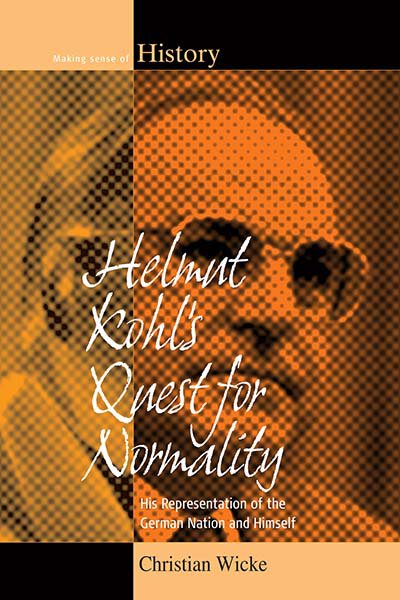 HELMUT KOHL’S QUEST FOR NORMALITY
HELMUT KOHL’S QUEST FOR NORMALITY
His Representation of the German Nation and Himself
Christian Wicke
Volume 20, Making Sense of History
“Wicke’s work makes substantial contributions to scholarship in historiography, nationalism studies, German studies, memory studies, and leadership studies. In marrying biographical method with nationalism studies, Wicke successfully trials a new research methodology that, in its many potential applications, will be certain to interest all scholars of nationalism.” · H-Nationalism
“Christian Wicke’s book—simultaneously a biography of Helmut Kohl, relayed through four nationalist lenses, a history of the Federal Republic and Kohl’s years in politics, and a study in types of nationalism—is a highly creative contribution to historical and political scholarship…Wicke’s creative contribution to scholarship—synthesizing biography, public rhetoric and the study of nationalism—is unquestionable.” · German History
Read Introduction
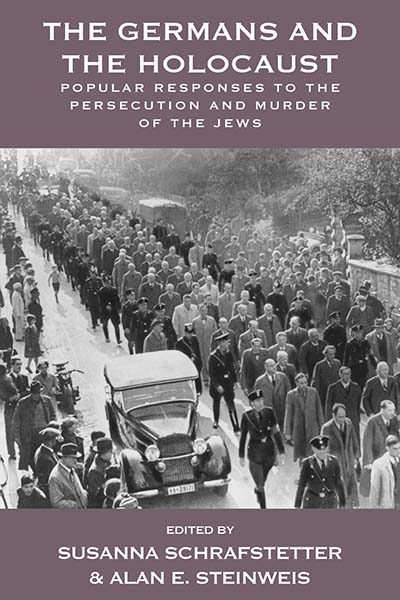 THE GERMANS AND THE HOLOCAUST
THE GERMANS AND THE HOLOCAUST
Popular Responses to the Persecution and Murder of the Jews
Edited by Susanna Schrafstetter and Alan E. Steinweis
Volume 6, Vermont Studies on Nazi Germany and the Holocaust
“This volume brings to light fresh material from hitherto neglected primary sources, and also makes available in English some findings only previously available to German readers. Especially valuable is the careful evaluation and comparison of reports about life in Nazi Germany from Nazi perpetrators, Jewish victims, and foreign bystanders.” · Geoffrey J. Giles, University of Florida
Read Introduction: The German People and the Holocaust
